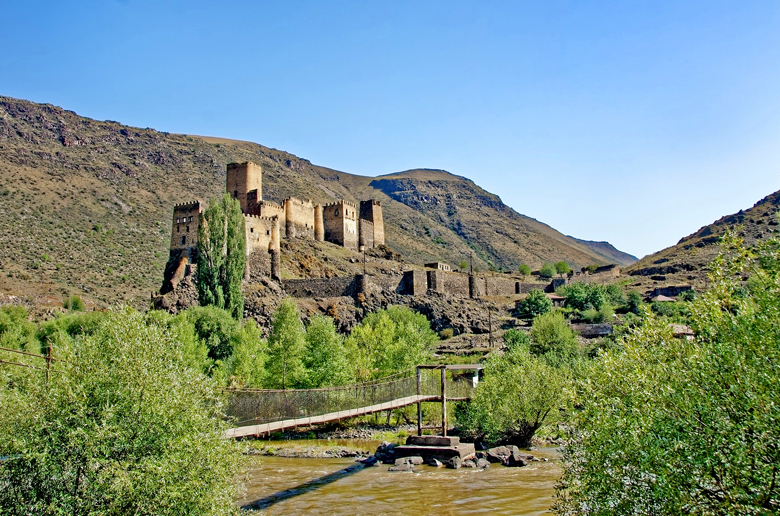Khertvisi is one of the oldest and best preserved fortresses of the Georgian Middle Ages. Located in the region of Samtskhe-Javakheti, in the southern part of Georgia.
The construction of the fortress began in the second century BC. The church on its territory was built in 985, and obtained its current shape after the reconstruction in 1354. According to legend, Khertvisi was destroyed by the Greek Alexander the great . In the 10th and 11th centuries it was one of the most important centers of Samcche-Javakheti.
Khertvisi in the 13th century was destroyed by the Mongols, it regained its significance only in the 15th century. In the 16th century, Turks invaded southern Georgia, Khertvisi remained under their rule for three centuries. At the end of the 19th century, the fortress became part of the Russian Empire, a military base for Georgian and Russian troops was located here.
Chronicler Leonti Mroveli mentions Khertvisi – which he considers one of the first cities in Georgia – in connection with the campaigns of Alexander the Great (IV century BC). In the early Middle Ages, the city fell into decay, and only in the X-XI centuries the newly rebuilt fortress grew to the scale of the city and became the center of the Meskheti region.
Chronicler Leonti Mroveli mentions Khertvisi – which he considers one of the first cities in Georgia – in connection with the campaigns of Alexander the Great (IV century BC). In the early Middle Ages, the city fell into decay, and only in the X-XI centuries the newly rebuilt fortress grew to the scale of the city and became the center of the Meskheti region.
In 1832, the Swiss geographer and traveler Dibuja de Montpare found at the entrance of the castle an extensive posthumous inscription first read by Marie Brosse and published in 1909 after proper editing by Ekvtime Takaishvili.
“In the name of God, Och, and of the Holy Mother of God, the Fathers of the Holy Ghost, John the Evangelist”
Today Khertvisi is an architectural monument of Georgia. Since October 24, 2007, it has been included in the UNESCO World Heritage Sites List with the Khertvisi Vardzia Monastery
Highlights: Site layout :
- Khertvisi Fortress is located on a high, rocky hill in a narrow canyon at the confluence of the rivers Mtkwari and Parawani. The defense system was based on steep and thick walls and four towers. Later, the fortress was enlarged by a west wing reinforced with towers and external fortification. From the east, two passages lead to the Kura Javachecka river, which were used to provide water and connect with the outside world in the event of a siege.The ensemble of the fortress is multi-layered. It consisted of an upper fortress (citadel), most of which has survived to this day, and adjoining it from the southeast of the lower fortress. The bulk of the existing structures belongs to the X-XIV centuries, there are small extensions of the XVI-XVIII centuries.
- Inside the fortification of the eastern and western part, there are two towers erected in the 12th century by Queen Tamara.
- Church of St. George in Khertvisi Castle : Prison Church, On the west side of the Khertvisi Fortress is a small church-chapel with a rectangular church-chapel – exterior dimensions 2.7 x 4.3 m- , with the only entrance to the west. The altar is half the size of the lower circle. The lower part of the apse and the altar floor, which is elevated in one step, are cut into the rock.
Access : Coordinates: 41.476667, 43.285833 / Distance / Time: 238 km from Tbilisi to Aspindza, it will take you three and a half hours to get there.
Ammenities available : visitors center / parking lot / the infrastructure is fully adapted for people with disabilities
Go next : fortress of Tmogwisciche / Khertvisi Vardzia Monastery / Paravani Lake /

